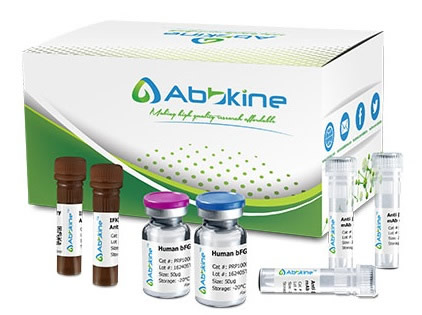The signal recognition particle (SRP) is a ribonucleoprotein complex that mediates the targeting of proteins to the endoplasmic reticulum (ER). The proteins are bound to the 7S RNA as monomers (SRP19 and SRP54) or heterodimers (SRP9/SRP14 and SRP68/SRP72). SRP9 and SRP14 constitute the Alu domain of 7S, whereas the other 4 proteins belong to the S domain. SRP has at least 3 distinct functions that can be associated with the protein subunits: signal recognition, translational arrest, and ER membrane targeting by interaction with the docking protein.The predicted amino acid sequence was found to be approximately 90% similar to the mouse homolog. The human sequence is longer at the C terminus and the predicted protein is 18 kD rather than 14 kD.
Bovine Signal recognition particle 14 kDa protein (SRP14) ELISA Kit employs a two-site sandwich ELISA to quantitate SRP14 in samples. An antibody specific for SRP14 has been pre-coated onto a microplate. Standards and samples are pipetted into the wells and anySRP14 present is bound by the immobilized antibody. After removing any unbound substances, a biotin-conjugated antibody specific for SRP14 is added to the wells. After washing, Streptavidin conjugated Horseradish Peroxidase (HRP) is added to the wells. Following a wash to remove any unbound avidin-enzyme reagent, a substrate solution is added to the wells and color develops in proportion to the amount of SRP14 bound in the initial step. The color development is stopped and the intensity of the color is measured.
Bovine Signal recognition particle 14 kDa protein (SRP14) ELISA Kit listed herein is for research use only and is not intended for use in human or clinical diagnosis. Suggested applications of our products are not recommendations to use our products in violation of any patent or as a license. We cannot be responsible for patent infringements or other violations that may occur with the use of this product.
bio-equip.cn




